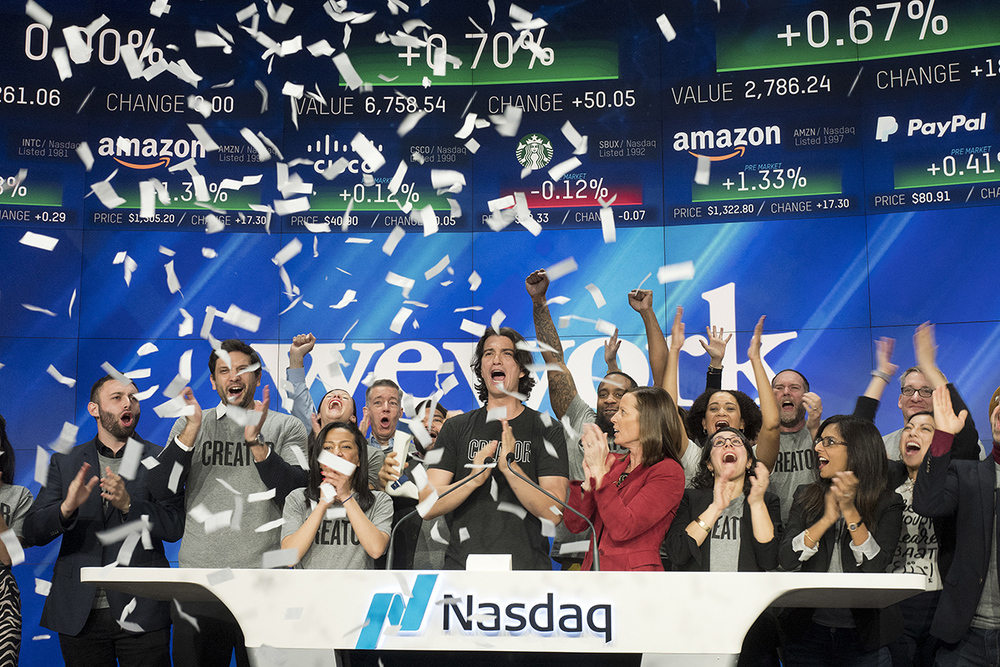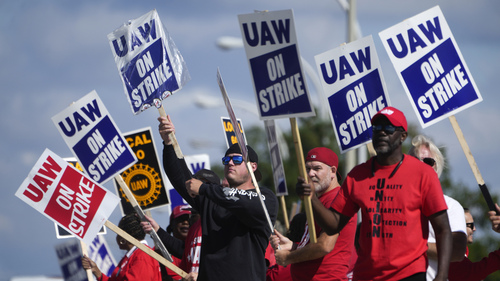The Power Gap Among Labor Unions: Why Some Have New Strength–and Others Don’t
As the United Auto Workers set up picket lines last week outside of plants for General Motors, Ford and Stellantis (maker of Chrysler, Jeep and Dodge), there was a sense of familiarity, of economic history repeating itself. In times past, the UAW would roll up to a contract negotiation with all eight cylinders of its union engine roaring. There were work stoppages, but when the Big Three controlled 80% of the market, the car companies had a lot of sales to lose in enduring a long strike, so they had some willingness to compromise.Since the 1980s, though, the UAW–not to mention the United Steelworkers and other large industrial unions–have been squeezed by the global labor arbitrage that shifted work to Asia. They’ve become fewer in number, less powerful politically and forced into waves of givebacks to keep their jobs. Most galling, for the UAW, was the adoption of a two-tiered wage system—a lower rate for new hires, vs. legacy workers. The scoresheet has not been kind to labor; its share of national income has been in a long decline, one that has accelerated in this century.This year, the wealth and power pendulum has started moving the other way. The post-pandemic reordering of the global supply chain that enriched some U.S. industries–think greedflation–has given the UAW, and a few other unions the chance to muscle up again. They’re seizing the moment to demand a share of that new wealth. This is a workforce that has done everything asked of it during the pandemic to meet the needs of corporations and their customers.Which is making labor more militant, more willing to hit the bricks for better pay and benefits. We're going to see this soon in Las Vegas, where the Culinary Workers Union, 50,000 of them, may strike the major hotels and casinos if there’s no new contract. Las Vegas has been recording record month after record month of revenues since the end of the pandemic, and the unions quite reasonably expect to get a piece of those winnings. Some corporations have acknowledged as much, with the Teamsters winning a big contract with UPS. Likewise, American Airlines just settled with its pilots on a new contract in August, providing a 46% increase in compensation, as “revenge travel” hasn’t slowed. Why wouldn’t you settle with workers if your airline is filling every seat, and facing a pilot shortage over the next decade? Pilots are United and Delta have also settled. That’s the benefit of a healthy economy, when labor and management each have more to gain than lose.The economy can’t solve every labor issue. In Hollywood, both the Writers Guild of America and the Screen Actors Guild have been on strike for months against the movie studios and the streaming companies. And in warehouses and coffeeshops nationwide, Amazon and Starbucks are fighting bitterly against determined unionization efforts. Every labor negotiation rests on the extent of the common interests among the two parties. In the UPS negotiation, each side had too much to lose to take a strike. Shippers had already been moving their UPS business to other carriers as talks dragged on. And with drivers now earning more than $100,000 annually in some places, the urge to walk rather than deliver wasn’t strong. So UPS and the Teamsters settled and each can claim victory. This is the same Teamsters union that refused yet more givebacks with foundering Yellow Freight, and allowed the company to go under. Yellow had been in the red for years and the union could not see a way forward. With demand for truckers still high, and Yellow’s assets going on the block, there will still options for its drivers.For the auto companies, business is great but business is also changing rapidly–and that’s where the mutual interests are parting. Detroit has been able to sell every pickup truck it can build, for instance. These are the industry’s most profitable vehicles. How much of that business is worth risking? But the switch from internal combustion engines to EVs has introduced a host of new technologies that is reordering the workplace, and the unions are wary. Transmission plants get replaced by battery plants, for example, and the automakers are placing some of those plant in less union-friendly geographies in the South. The UAW has seen this movie before, when robotics came on the scene and eventually displaced a wide swath of jobs.Yet neither side is playing hardball, it seems. The unions are picketing at three selected plants–one from each automaker, a switch from the days when it would focus attention on one company. That includes a Stellantis factory in Ohio, for instance, that makes the ever-popular Jeep. The union calls it a “standup strike.” The idea is to get the message across without crippling the entire industry. GM CEO Mary Barra, a lifelong GMer and the daughter of a GM engineer, has tried to keep the temperature low: “If you’re asking for more than the company made, I think that’s not a good position,” Barra said, but added, “I think we’re in a good position to get this done.” The gap remains wide, but that was also the case with UPS and the Teamsters.Technology is also a feature in the Hollywood strike by creatives against the studios and streamers. The actors and writers see AI technology being used to deprive them of earnings and intellectual property. Talks stalled, but there is still talk. Warner Bros. Discovery CEO David Zaslav tried to spread optimism, telling analysts: “We are just hopeful as a company, and I am very hopeful, that we can get that resolved. If we can get it resolved soon, then the long-term impact will be minimized.” But that optimism sounded a bit scripted, given that Warner has been willing to take a $500 million hit to earnings during the strike, and Zazlov’s lavish pay packet, $285 million over the last two years, has further impassioned workers over lavish media CEO pay.The dissonance could not be any greater in the case of Starbucks and Amazon, whose founders still exert a powerful influence on labor relations, leading to conflict. For Starbucks former CEO and chairman Howard Schultz, the battle with unions has been particularly difficult. Schultz, who grew up working class in Brooklyn, is a progressive. Starbucks pays well and has good benefits. He cares about the workforce, so he can’t understand why workers would want a union. He believes that he’s in the right position to know what they need, moreso than a union. But his view is from the top down. From that vantage point, understanding the workers’ point is view is difficult–very few business owners can do it. Henry Ford had the same stance–and his hired goons’ violent confrontation with union organizers was a turning point in UAW history.At Amazon, founder Jeff Bezos built a company by being a control freak over costs and operations and trained his senior managers that way. Unions represent a threat to that control mantra. And threatens to bring higher costs. Workers, for their part, see themselves as dehumanized labor inputs within Amazon’s system, not people. So the fight goes on, in both companies.The capital vs. labor issues this year are unique to their time–an economic situation unlike we’ve ever experienced and rapid technological developments that are rearranging traditional conflicts. The path to labor peace in the auto industry, then, may require these two old adversaries to bring more imagination and innovation to the negotiating table. Bill Saporito is an editor at large at Inc. magazine. Previously, worked as an assistant managing editor at Time magazine and as a senior editor at Fortune.(Featured photo: United Auto Workers members walk the picket line at the Ford Michigan Assembly Plant in Wayne, Mich., on Sept. 18, 2023. AP Photo/Paul Sancya)





